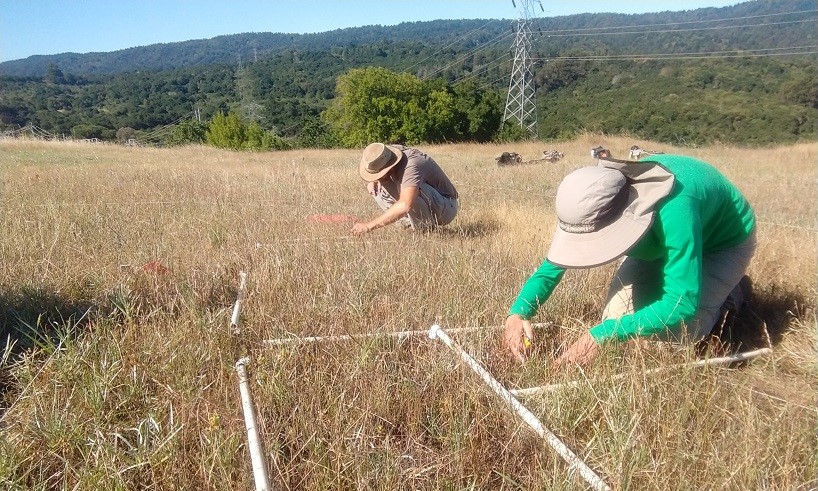 Photo Credit: Christal Niederer. Caption: Creekside Science staff monitoring San Mateo thorn-mint.
Photo Credit: Christal Niederer. Caption: Creekside Science staff monitoring San Mateo thorn-mint.
Field biologist Christal Niederer is proof that many paths lead to careers in conservation science. Christal’s first career and degree were in journalism. She recalls: “I was working in book publishing at a beautiful building that backed up to open space. Bobcats, deer, and brush rabbits would come right up to the window. I finally realized I wanted to be outside where they were! I made the switch and never regretted it.”
Christal has worked at Bay Area-based environmental consulting firm Creekside Science since 2005. She helped the firm’s founder and chief scientist, Dr. Stuart Weiss, grow the business to where it soon supported full time staff. Creekside Science’s five scientists work on projects ranging from rare plant surveys to restoration. Bay checkerspot butterfly reintroduction and monitoring are key components of the firm's work.
Currently, Christal is most proud of Creekside Science’s San Mateo thorn-mint (Acanthomintha duttonii) recovery project. “When I started working on this project in 2007, there was only one known location of this tiny annual forb, which dipped down to 249 individuals in 2008. It could have so easily blinked out, but with help from a huge host of partners (USFWS, CDFW, San Mateo County Parks, San Francisco Public Utilities Commission, Friends of Edgewood, UC Berkeley Botanical Garden, Yerba Bioadvocacy, and many others) there are now six extant locations, with about 25,000 wild individuals counted this year. I truly believe if nobody had taken this on, the plant would soon be extinct. Passive recruitment at some of my sites is really high and it’s just so exciting to watch these plants thrive in the right spot.”
Christal contributes regularly to the CNDDB, especially in association with Creekside Science’s reintroduction projects. “It feels good to know you’re the current expert on a particular occurrence, especially if you’ve led a project to reestablish that taxon. Having your report change the occurrence from ‘presumed extirpated’ to ‘extant’ feels really good. I’m always amazed how much information is in the CNDDB when I need to look something up. We’re all so lucky to have this resource, and we need to take the time to keep it current.”
Don’t wait—take time today to  submit your field data to CNDDB and help us keep this resource up-to-date!
submit your field data to CNDDB and help us keep this resource up-to-date!